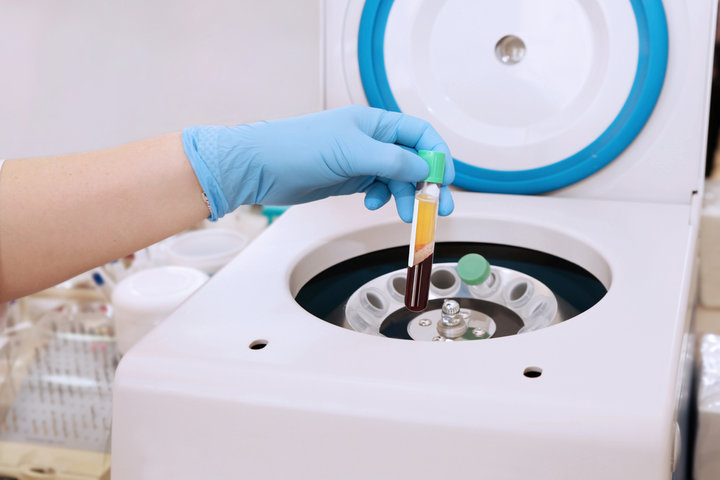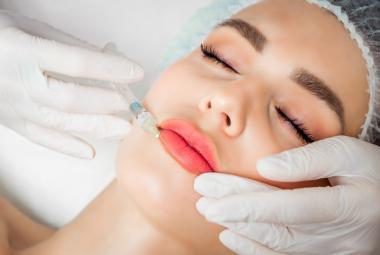Platelet-rich plasma (PRP) has become popular in both cosmetic and medical settings for its ability to support healing, boost hair growth, and rejuvenate skin. Many mothers are curious about these treatments after pregnancy but wonder: is PRP safe while breastfeeding?
This guide will explain what PRP is, how it works, how it’s used, what to expect from the procedure, and what current evidence says about its safety in breastfeeding.
What is PRP?
Platelet-rich plasma (PRP) is a concentration of platelets derived from your own blood. These platelets contain natural growth factors—substances your body already uses to heal wounds and regenerate tissue. In cosmetic medicine, PRP harnesses these same healing properties to rejuvenate the skin and stimulate hair growth.
How PRP is Used
Cosmetic Uses
PRP is commonly used to:
- Improve skin tone and texture
- Soften fine lines and wrinkles
- Reduce acne scars or pigmentation
- Support hair regrowth in thinning areas
PRP can be injected directly into the skin or scalp, or applied topically after microneedling or laser treatments. Once applied, the platelets release growth factors that stimulate collagen and elastin production, increase blood flow, and encourage natural tissue repair—leading to smoother, firmer, and more radiant skin over time [1].
Medical Uses
Beyond cosmetic applications, PRP is also widely used across medicine, including:
- Sports medicine: healing tendon or ligament injuries, arthritis, or even supporting recovery after joint surgeries
- Wound care and reconstructive surgery: speed up healing of chronic wounds, burns or chronic breast wounds following cancer surgery or reconstruction.
- Oral surgery and dentistry: to support healing after extractions or implants
PRP and Breastfeeding: Is it Safe?
The good news for nursing parents is that PRP is widely considered safe during breastfeeding. Because the treatment uses your own platelets and plasma, the risk of transferring anything harmful to an infant is extremely low. The anticoagulants used during PRP preparation—such as sodium citrate, ACD, or EDTA—are present only in very small amounts and are intended simply to prevent clotting during processing. These agents stay localized at the injection site rather than entering the bloodstream in amounts that could affect milk supply or infant safety, and systemic anticoagulant effects have not been reported [2].
Local vs. System Effects
PRP is designed to act locally at the site of injection, whether it is used for cosmetic dermatology, hair restoration, or musculoskeletal healing. Imaging studies show that the injected material generally stays within the targeted tissue, though a small amount may spread to nearby soft tissues—which is expected and not harmful [3].
Some growth factors released from the activated platelets can enter the bloodstream briefly, causing mild, temporary increases in levels of growth factors few days. These systemic effects are modest, short-lived, and not known to cause any clinically significant effects in adults or infants. Importantly, these growth factors naturally exist in human blood and tissues, including breast milk, and the slight temporary elevation after PRP does not pose a risk to the breastfeeding parent or the baby [4].
What the Research Shows
To date, the medical literature has not reported any adverse outcomes in breastfeeding infants whose mothers have received PRP treatments—including in cases where PRP was used directly on the breast for wound healing. Professional guidelines do not list breastfeeding as a contraindication to PRP, and the treatment is generally well-tolerated. The most common side effects are minor and temporary, such as mild swelling, bruising, or injection-site tenderness [5].
Overall, PRP’s strong safety profile, combined with its local mechanism of action and lack of systemic drug exposure, makes it a favorable option for individuals who wish to continue breastfeeding while receiving regenerative or cosmetic treatments.
What to Expect During Treatment
Before the Procedure
Your provider will review your medical history and may order lab tests if needed. You’ll be instructed to avoid NSAIDs like ibuprofen for about a week before and after the procedure (more on this later). Arriving with clean skin—free of makeup, lotions, or creams—is typically recommended.
During the Procedure
A PRP session begins with a small blood draw, usually 10–20 mL, which is collected into a sterile tube containing a small amount of anticoagulant to prevent clotting. The sample is then placed into a centrifuge, where it spins for about 10–15 minutes per cycle to separate the blood into layers: red blood cells at the bottom, a middle buffy coat of white blood cells and platelets, and platelet-rich plasma at the top. Depending on the PRP system used, a second spin may be performed to further concentrate the platelets. The PRP layer is then extracted and transferred into sterile syringes for use.
Once prepared, the PRP is either injected into the targeted area or applied topically after treatments such as microneedling or laser therapy. A topical numbing cream or local anesthetic may be used for comfort (link to prior vanity article discussing numbing-cream safety during breastfeeding). Because PRP is derived from your own blood and used immediately, the risk of allergic reaction, rejection, or disease transmission is extremely low; unused components are simply discarded as medical waste.
The entire appointment typically lasts 30–60 minutes, making PRP a relatively quick, same-day regenerative treatment with minimal downtime.
Aftercare
Mild redness, swelling, or bruising is normal after PRP treatment and typically resolves within a few days; serious complications such as infection are very rare. Most people can return to their normal daily activities right away, but it’s best to avoid sun exposure, harsh skincare products, and strenuous exercise for the first 24–48 hours. Focus on gentle skincare and keeping the area well-hydrated as it heals.
It’s also recommended to avoid NSAIDs (like ibuprofen) for about 1–2 weeks—not due to breastfeeding concerns, but because these medications can interfere with PRP’s effectiveness. NSAIDs reduce platelet activation and can limit the release of growth factors that drive PRP’s healing and rejuvenating effects. Since PRP relies on a controlled inflammatory response, NSAIDs may blunt this process and reduce the treatment’s benefits. Clinical protocols commonly advise waiting several days to a couple of weeks before using NSAIDs to ensure optimal results [6].
Understanding the Risk of Contamination
Although PRP itself poses minimal biological risk, the blood processing steps carry a theoretical risk of contamination. Contamination can occur at any point—during blood collection, centrifugation, transfer, or injection—especially if sterile technique is not rigorously maintained.
Research on platelet components used in medical settings estimates the bacterial contamination rate to be around 0.38 per 1,000 samples, depending on the method and environment [7].
To minimize this risk, PRP should always be prepared and injected under medical-grade sterile conditions, using closed-system kits that prevent environmental exposure. These systems allow blood collection, centrifugation, and PRP extraction to occur within sealed containers, limiting the chance of contamination.
In well-controlled clinics and medical offices, the risk is considered very low. However, open systems or nonmedical spa settings that do not follow infection-control standards may increase the risk.
Key Takeaways for Breastfeeding Moms Considering PRP
- No evidence suggests PRP is harmful to breastfed infants.
- Results are gradual and may require multiple sessions.
- Choose a licensed medical provider who uses closed PRP systems and strict sterile technique to ensure safety.
Bottom Line
PRP is a minimally invasive treatment that harnesses your body’s own healing mechanisms to rejuvenate skin and stimulate hair growth. For breastfeeding mothers, current evidence is highly reassuring: there are no known risks to infants, and complications are rare when PRP is prepared and administered under proper medical supervision. While research in lactating women is still limited, PRP stands out as one of the most biologically compatible and low-risk cosmetic treatments available.
Nichole Campbell, MSN, APRN, NP-C
Katie Boatler, RN, BSN
Kaytlin Krutsch, PhD, PharmD, MBA, BCPS
References
1. Phoebe, L.K.W., et al., Use of platelet rich plasma for skin rejuvenation. Skin Res Technol, 2024. 30(4): p. e13714.
2. Oneto, P., et al., Anticoagulants Interfere With the Angiogenic and Regenerative Responses Mediated by Platelets. Front Bioeng Biotechnol, 2020. 8: p. 223.
3. Loftus, M.L., Y. Endo, and R.S. Adler, Retrospective analysis of postinjection ultrasound imaging after platelet-rich plasma or autologous blood: observational review of anatomic distribution of injected material. AJR Am J Roentgenol, 2012. 199(4): p. W501-5.
4. Hunter, C.W., et al., Consensus Guidelines on Interventional Therapies for Knee Pain (STEP Guidelines) from the American Society of Pain and Neuroscience. J Pain Res, 2022. 15: p. 2683-2745.
5. Merchan, W.H., et al., Platelet-rich plasma, a powerful tool in dermatology. J Tissue Eng Regen Med, 2019. 13(5): p. 892-901.
6. Ramsook, R.R. and H. Danesh, Timing of Platelet Rich Plasma Injections During Antithrombotic Therapy. Pain Physician, 2016. 19(7): p. E1055-61.
7. White, S.K., et al., Bacterial contamination rate of platelet components by primary culture: a systematic review and meta-analysis. Transfusion, 2020. 60(5): p. 986-996.







